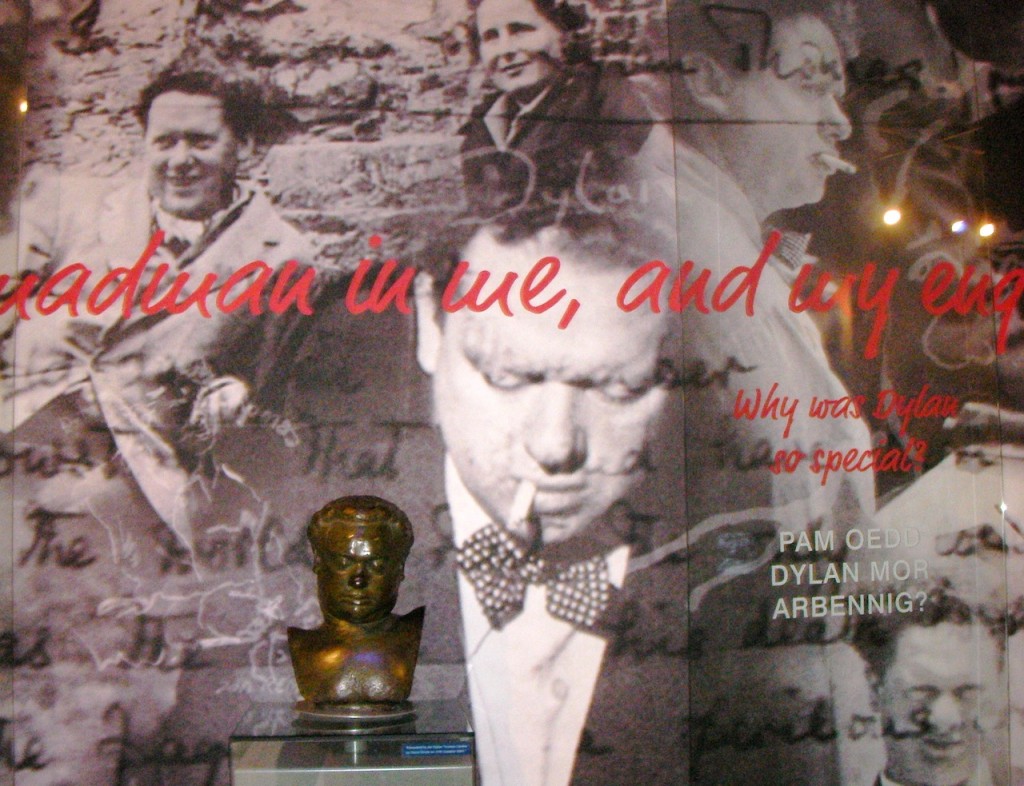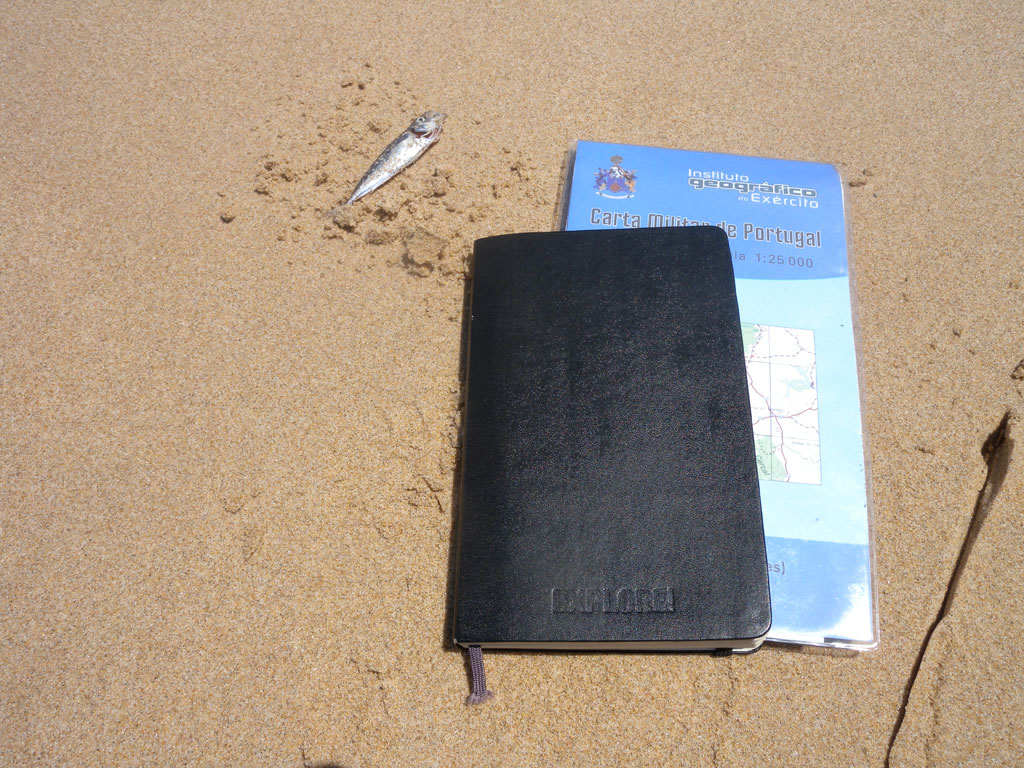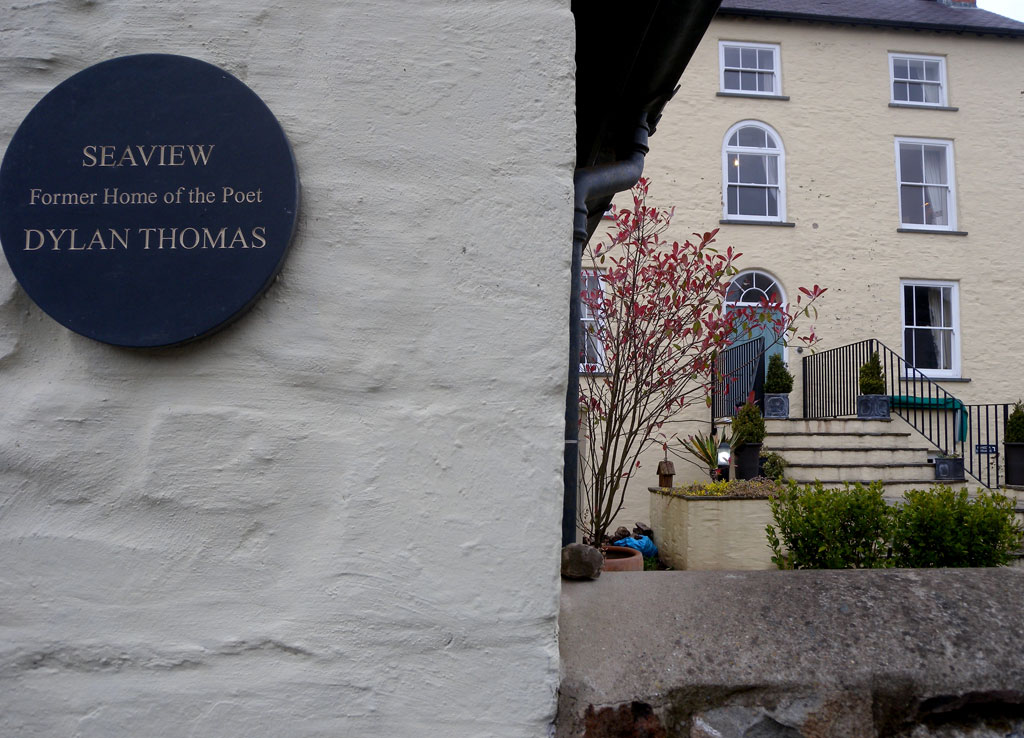* Right up to date this weekend with Laugharne Live bringing Dylan Thomas devotees to West Wales.
As ever, follow me on Twitter, or subscribe to the RSS, for weekly updates from my travel-writing archive in the months to come.
It started with a shooting.
In March, 1945, the British army officer William Killick, recently returned from active service overseas, collected a machine gun from his home in southwest Wales.
He marched down to the neighbouring property and, fuelled by drink and a heated discussion in the Black Lion pub, fired several shots into the bungalow, Majoda. Inside was the poet Dylan Thomas [pictured above], his wife Caitlin McNamara and Kellick’s wife, Vera, Thomas’ childhood friend from Swansea.
Thomas refused to testify against Killick at the subsequent court case in Lampeter and the soldier was acquitted. But the shooting also marked the end of a tremendously creative period in Thomas’ life.
By July 1945, Thomas and his family had left New Quay never to return.
This brief but important period forms the backdrop to The Edge of Love, a semi-fictionalised film about Thomas’ life released in 2008 with Rebekah Gilbertson, a descendant of William and Vera Killick, acting as producer.
Thomas had moved to Majoda on the fringe of New Quay in September 1944. It was one of the coldest winters on record and the bungalow, little more than a wood-and-asbestos shack, had no amenities.
Yet despite the conditions, Thomas was happy here and this reflected in his output. He completed several major works, including A Winter’s Tale and A Refusal to Mourn the Death, by Fire, of a Child in London, plus the radio script Quite Early One Morning.
“It was,” says David N. Thomas, author of Dylan Thomas: A Farm, Tow Mansions and a Bungalow, “one of the most productive periods of his adult life. A second flowering.”
A place by the sea
Wales is expecting an influx of Dylan devotees in 2014 with a major cultural programme to mark the centenary of his birth.
Most Thomas pilgrimages lead from Cwmdonkin Park in Swansea, where he was born, to Laugharne, Carmarthenshire, where both he and Caitlin are buried.
The well-trodden trail leads via Swansea pubs and the country lanes of West Wales to The Boat House, where the family moved in 1949.
It was from here that Thomas left for New York in 1953 as part of an American reading tour. He was just starting to receive critical acclaim for his work when he died on November 9 at St Vincent’s Hospital.
But to leave out New Quay is to omit a crucial element of Thomas’ story.
That’s why I’ve come to Ceredigion for a self-drive weekend, exploring the country lanes and rustic pubs that inspired one of the shortest but most creatively dynamic eras of his life.
The journey mirrors a project by Literature Wales, a series of one-off walks during summer 2014, whereby in-situ contemporary writers and actors will bring places from this period of his story to life.
I start my odyssey in his footsteps by approaching the charming seaside town of New Quay the same way Dylan would have approached it – walking along what is today the Ceredigion Coast Path from Majoba towards the town.
In Quite Early One Morning he describes this very walk, creeping out after dawn to breathe the sea air and walk the silent streets of the “the cliff-perched town at the far end of Wales.”
The windows of the pastel-coloured, matchbox houses still glisten in the morning sun just as he described them.
The approach to town via Brongwyn Lane, repurposed as Goosegog Lane for Under Milk Wood, opens up before me to reveal New Quay, higgledy-piggledy and sea-breeze blown, to be little different now from Dylan’s day.
The Dylan Thomas New Quay trail map, available from the tourist information centre, highlights places around town that Thomas frequented, taking in the old post office, from where he posted his scripts to London, Manchester House, the former draper’s shop, and notably the Black Lion Hotel, the bar most often frequented by Dylan and his friends.
For fans of his work, it’s a chance to connect with the landmarks he recorded in his punch-drunk verse.
Local hospitality
That night over dinner at the Black Lion Hotel, now re-opened as a restaurant with rooms, the locally based writer Roger Bryan describes how Thomas’ time in New Quay inspired some of his best characters.
This ear for gossip and personality traits became a key device for developing the script for Under Milk Wood. Indeed, many suggest that New Quay, not Laugharne, provided the real inspiration for Llareggub, the setting for his best-known play for voices.
“He drank in the Black Horse Hotel and was fascinated by the local characters, especially the then landlord, Jack Pat, who sometimes rode his horse right into the tiny, one-room bar,” says the Lancashire-born owner of Plas Llanina, the erstwhile country pile of the patron of poetry and arts Lord Howard de Walden.
“He repurposed the local farmers, shopkeepers and sea captains to populate his own stories.”
The painter Augustus John introduced de Walden to Thomas and his lordship was suitably impressed by the young poet’s work to offer him free use of the 18th-century Apple House [pictured below] as a writing studio.
The dilapidated storage shed was located in the grounds of his mansion, Plas Llanina. Dylan was living down the road at Majoba with his young family at this time and craved a place of tranquillity to work.
Today the ruined structure of the Apple House remains at the bottom of the tree-fringed garden. Ivy creeps defiantly through the broken-down window frames while the stone chimney clings to the roof with an air of perilous desperation.
Roger plans to open the grounds on selected dates in 2014 for people to admire the Apple House in all its ruined, falling-down glory – eventually to start raising funds to save it.

From the archives
The next morning I venture beyond New Quay, driving the country roads of Ceredigion that Thomas came to know so well.
Heading towards Aberystwyth, I eschew the coast road in favour of the more circuitous but scenic backroads.
The drive takes me through the rural wooded valley of the River Aeron, passing tiny farm estates and lost-in-time chapels.
These are the roads where Dylan would join the local vet, Tommy Herbert, on his rounds of the farms to gather material for his stories.
On the way, I stop off at Plas Gelli, a modest country-house estate located near the hamlet of Tal-sarn.
Today privately owned, Dylan and Caitlin lodged here between 1941 and 1943 at the invitation of William and Vera Killick, the redwood-engulfed house providing wartime shelter from the bombing of London and Swansea.
Today, a wooded public footpath leads past the house, towards the banks of the River Aeron, where it is suggested that Dylan’s first child, Aeronwy, was conceived.
A letter Thomas sent in August 1942 to a friend in London describes the sanctuary of life at Gelli. He wrote: “I watch the sun from a cool room and know that there are trees being trees outside and that I do not have to admire them.”
The letter and the sketch map he drew of fictionalised Llareggub are just two of the items to feature in Dylan, a major exhibition from June 28 to December 20, 2014, at the National Library of Wales in Aberystwyth.
The library is home to the extensive Dylan Thomas collection, which will be bolstered by the arrival in March 2014 of a set of Thomas’ original notebooks on loan from the University of Buffalo in New York City.
The library hopes to digitise the entire collection for posterity in due course.
“Before I joined the library I’d probably only ever read A Child’s Christmas In Wales. But now, having studied the archive, I feel like I know Thomas as a man,” says interpretation officer Mari Elin.
“He was much more than his popular image as a poet and a drunk. There is much more depth to his work.”
The three key elements of the exhibition are a set of more interpretative exhibits and sound installations in the Gregynog Gallery, the temperature-controlled Hengwrt Gallery to display more delicate items and an installation piece, based on life at the writing shed in Laugharne, by the visual artists Pete Finnemore and Russell Roberts.
One treasured exhibit, finding its place amongst a literary bar to pull poems, a walk-through Llareggub and a legacy section to record your own reactions to Dylan’s life and work, is a hand-written wordlist, columns of rhyming words Dylan used to compile his verse.
“This proves,” says Mari, “how important the sounds of the words were to him.”
Llareggub reborn
Back in New Quay, I meet the poet Samantha Wynne-Rhydderch to discuss the age-old theory about the true location of Llareggub.
Visitors to West Wales next summer will have an opportunity to decide for themselves if they venture beyond the traditional haunts of Swansea and Laugharne.
“Generations of my family have lived in this house,” says Wynne-Rhydderch, whose latest book, Banjo, was shortlisted for the Wales Book of the Year 2012. My maternal grandfather was Dr Jones, the village doctor for 30 years.
“He remembered patching up Caitlin one night after a particularly heavy session in the Black Lion.”
The poet has opened a retreat for writers and artists, Write by the Coast, in her converted 19th-century stable block in time for the centenary year, and will be poet in residence at the Dylan Thomas Boathouse during June 2014.
“Knowing the setting and the local characters, my feeling is that – while probably an amalgam – more of Under Milk Wood was based on New Quay than Laugharne,” she says.
“Quite simply,” she adds, “Dylan was always attracted to the most inaccessible places.”
More from www.dt100.info
* This story was first published in Discover Britain magazine in 2014. Liked this? Try Blogging the Dylan Thomas centenary.
And post your comments below.



